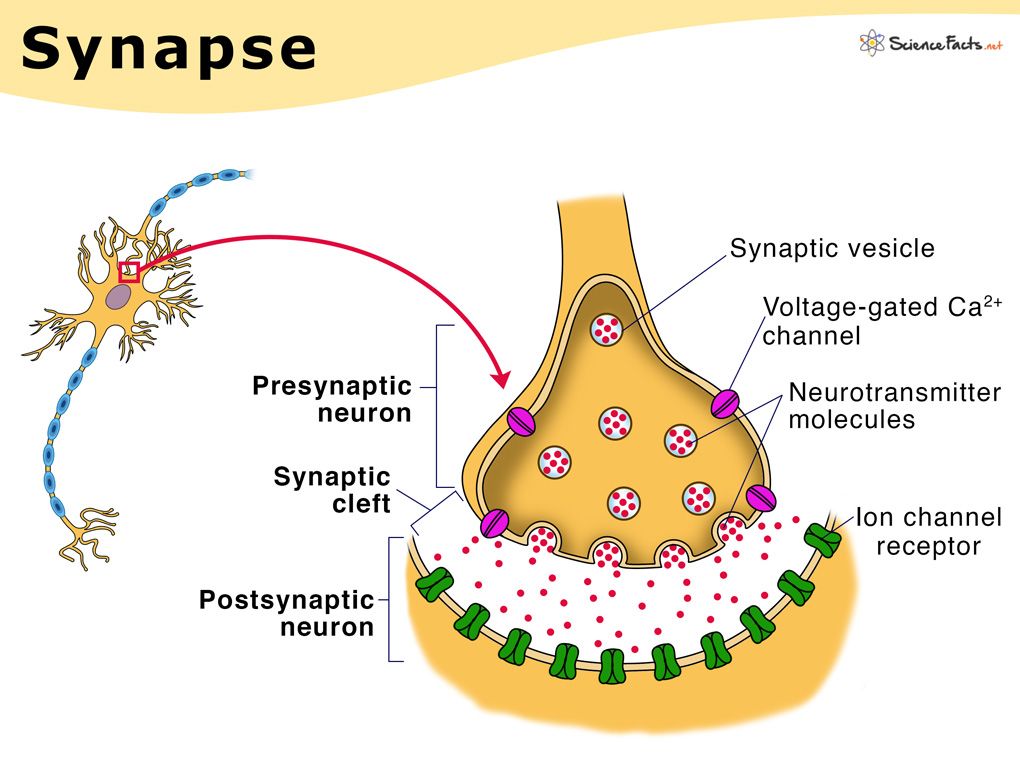Synapses Are Junctions Between Neurons and Effector Cells
Synapse
A chemical synapse is the point where two neurons meet or where a neuron meets an effector cell.
- Synapses are junctions where neurons connect with other neurons or Effector cells (e.g., muscle fibers or gland cells).
- These connections allow neurons to transmit signals, enabling the nervous system to coordinate complex activities like movement, sensation, and thought.

- Think of a synapse as a bridge between two islands.
- The presynaptic neuron sends a boat (neurotransmitter) across the water (synaptic cleft) to deliver a message to the postsynaptic neuron or effector cell.
Synaptic Transmission Converts Electrical Signals into Chemical Communication
The process of synaptic transmission involves several steps:
- Arrival of the Nerve Impulse: An action potential travels down the axon of the presynaptic neuron to the synaptic terminal.
- Calcium Ion Influx: The depolarization of the synaptic terminal opens voltage-gated calcium channels, allowing calcium ions ($Ca^{2+}$) to flow into the neuron.
- Neurotransmitter Release: The influx of calcium ions triggers vesicles containing neurotransmitters to move to the presynaptic membrane and release their contents into the synaptic cleft via exocytosis.
- Diffusion Across the Synaptic Cleft: Neurotransmitters diffuse across the synaptic cleft and bind to receptors on the postsynaptic membrane.
- Response in the Postsynaptic Cell: Binding of neurotransmitters to receptors causes ion channels to open, leading to changes in the membrane potential of the postsynaptic cell. This can generate an excitatory or inhibitory response, depending on the type of neurotransmitter and receptor involved.
- Termination of the Signal: Neurotransmitters are quickly broken down by enzymes or reabsorbed by the presynaptic neuron to prevent continuous stimulation of the postsynaptic cell.

- At a neuromuscular junction, the neurotransmitter acetylcholine is released by the presynaptic neuron.
- It binds to receptors on the muscle fiber, causing sodium ions to enter the cell.
- This depolarizes the muscle membrane and triggers a contraction.
Why Signals Travel in One Direction
- Synapses are designed to ensure unidirectional signal transmission.
- This is because:



